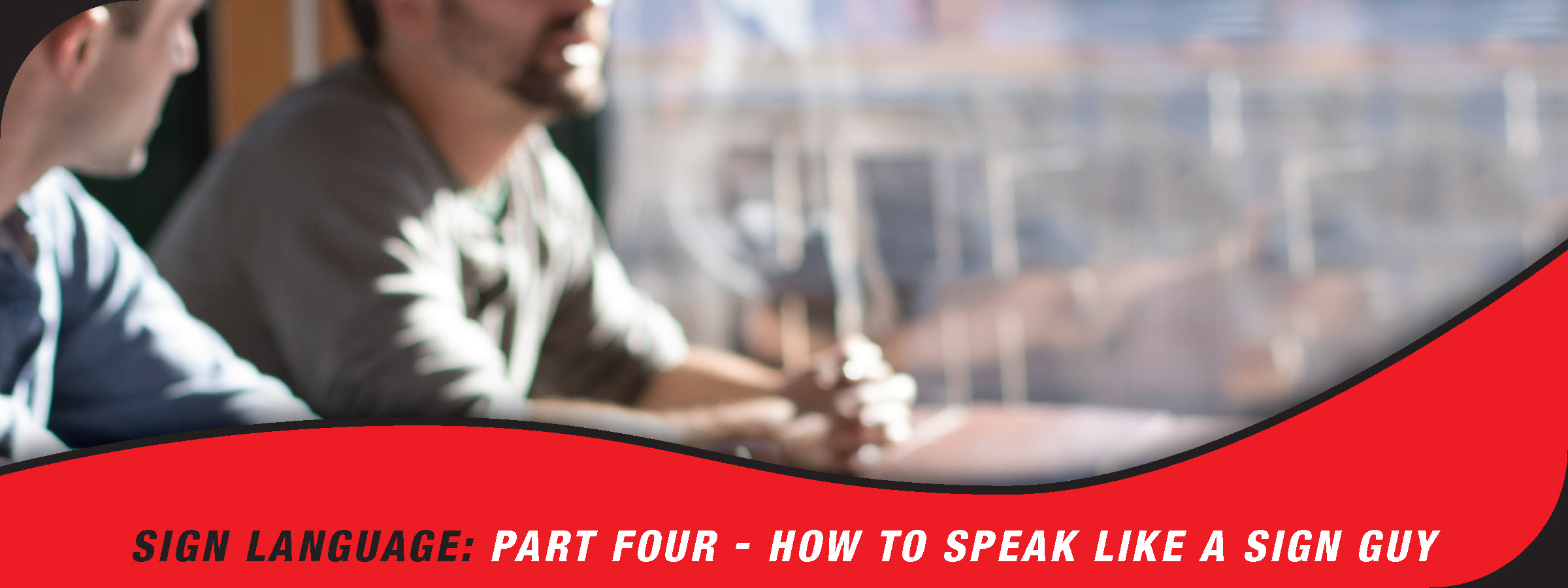
Old School Sign People know how to walk the walk and they know how to talk the talk. Putting your foot where your foundation is; instead of in your mouth, is only the first step to talking signs. Maintaining recollections of rebar and retaining substrate statistics is just scratching the surface. A tradition of craftsmanship and an alchemical preponderance on principals of engineering related to the collage of components in every custom job seems like shear wizardry to those curious on-lookers who try to grasp the meaning behind it.
Preparing yourself with at least a base of terminology and a rudimentary understanding of the manufacturing process can help you better negotiate in the mysterious world of the sign industry. The truly amazing practitioners from days long gone were pencil and paper wielders of artistic and scientific skill that surpassed the expectations of what was thought possible. They had a knack to create eye-teasing and heart pleasing works of wonder that lasted for years. Their legacy was a landscape of landmark signs that evoked powerful feelings about businesses for years on end.
These wonders of the modern age are probably what spurs on the desire for business people to find that perfectly intuitive signage that reaches their patrons in the same way. Bringing the overall concept to light and expressing every detail in perfect sign language can seem difficult but armed with the knowledge of how these artisans work and communicate, can alleviate any worry one might feel about it.
The whole process begins with need. The goal of the business owner is what drives this need. What is the goal? Where should the business be in five years? How can the sign industry help it reach those goals? These are questions to help narrow down the focus.
Then ask, what is the way forward? How many people do we need to reach and how can we widen that net? What are the strategic locations for signage that can attract the most potential patrons? If options were not limited by zoning and money, what would the signage look like? You can always narrow that down later. Once you have a focused idea including your message and brand then consider the following sign types:
1. Monument – This is a permanent structure that is separate from a building. It can be placed a little closer to the road and grabs attention at eye level. The wording and graphics can be a little smaller because it is intended to be viewed at a closer distance. For added effect, one might include an electronic message center or LED display.
2. Pole sign – This can be placed strategically on the property to reach people from farther out and the wording and graphics and overall size is much larger. The taller a pole, the larger that the sign cabinet on the pole needs to be.
3. Wall signs – Anything directly mounted to the wall of the building for identifying the business especially in a crowded business district. This should be a clear and concise message that is easy to read for those who are already on the property or closely passing by. Roof signs are also included in this category but are not as common.
4. Directional Signs – Any kind of sign that shows patrons where they need to go for certain services or to get to the entrance and the exit when needed, etc. They are sometimes called ‘way-finding’ signs. They may include arrows and other graphics to indicate direction.
Here are a few sentences you can use if you just fill in the blanks or circle an answer. These can be helpful when talking with a sign industry professional.
A. I want to place my sign on/at/along _______________________________________.
B. I want people to see this sign who are: far away/near-by/close to the building or ________________.
C. The purpose of this sign is to: draw people in from the street/draw them from far away/identify the business within the plaza/be a directional sign/advertise/ or __________________________.
D. We have certain things we already know that we do or don’t want included. What we do want is __________________________________________________________________________. What we don’t want is __________________________________________________________________________. (These could be things like; illumination, masonry, LED message center, channel letters, etc)
E. We have/ don’t have an actual logo to include already. We want/ do not want logo design included.
Akers Signs strives to speak in your language and bridge the gap between where your business is and where it needs to be. With you taking the lead, they will give you ideas and be your sounding board. They are not into high pressure sales or making overblown promises. They are direct, up front and friendly people who will help you understand what is available for meeting your goals.
The sign language series on the Akers Blog page is meant to help you learn some of the terminology of the sign industry. Please look for these articles to help increase your overall knowledge so you can communicate your plans and ask all the right questions. Before you know it, you may find yourself speaking like a sign guy.
